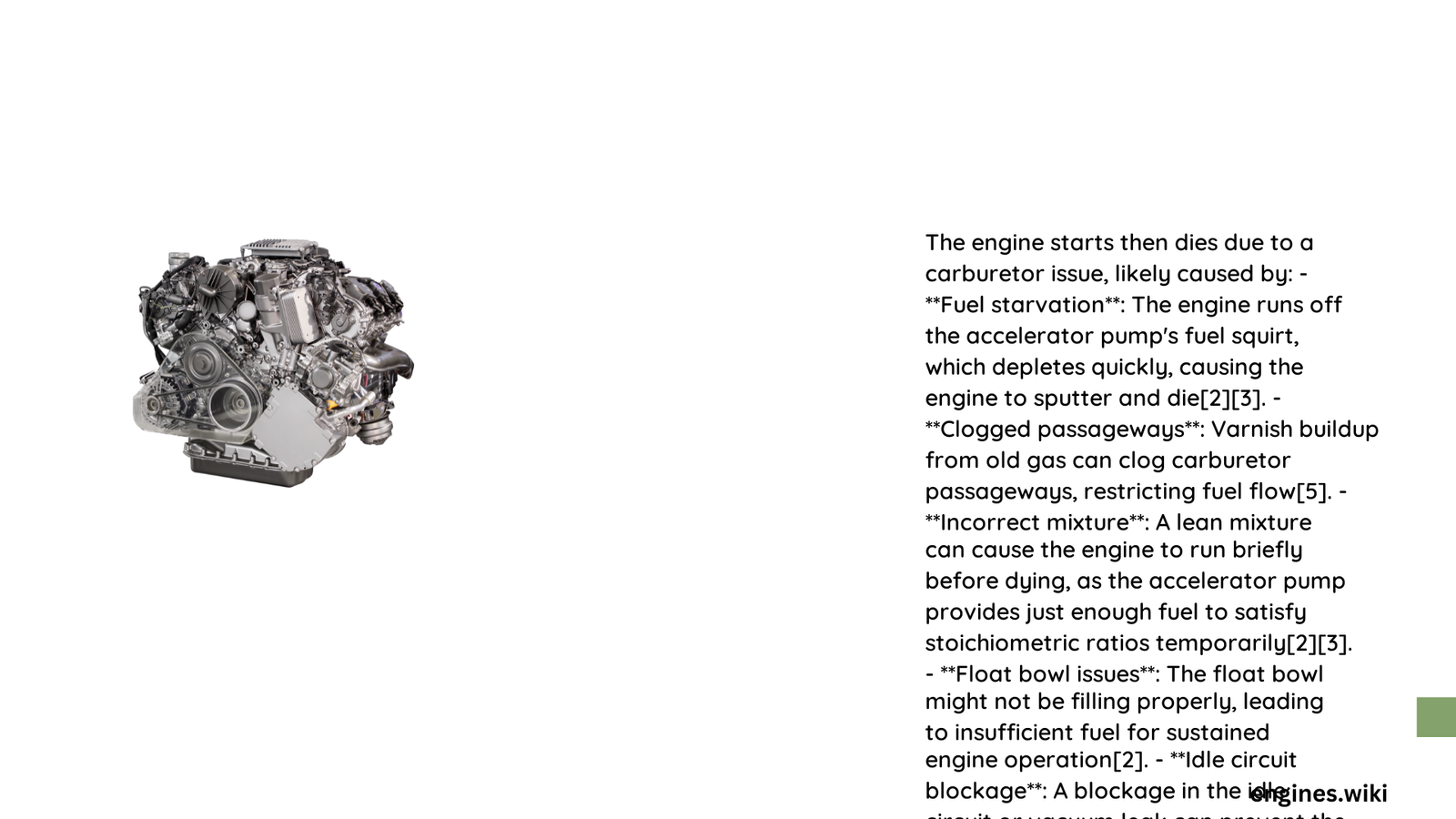When an engine unexpectedly starts and then abruptly dies, it signals potential carburetor complications that demand systematic investigation. Vehicle owners frequently encounter this frustrating scenario, which stems from intricate fuel delivery, mixture, and mechanical interaction problems within the carburetor system. Understanding the precise diagnostic approach can transform this challenging mechanical issue from a perplexing breakdown to a manageable repair.
What Causes Engine to Start and Immediately Die?
Fuel System Diagnostic Approach
Diagnosing an engine that starts then dies requires a methodical examination of multiple carburetor components. The primary suspects include:
- Fuel Delivery Interruption
- Blocked fuel jets
- Incorrect fuel bowl levels
-
Compromised fuel pump functionality
-
Air-Fuel Mixture Imbalance
- Incorrect idle mixture settings
- Vacuum leaks
- Choke mechanism malfunction
Critical Diagnostic Checklist
| Component | Potential Issue | Diagnostic Action |
|---|---|---|
| Choke Mechanism | Improper operation | Verify full opening within 5 minutes |
| Idle Circuit | Blockage or misadjustment | Check jet passages, adjust idle speed |
| Fuel Bowl | Incorrect fuel level | Measure and adjust float height |
| Vacuum Connections | Potential leaks | Inspect and seal all connections |
How to Perform Precise Carburetor Adjustments?

Step-by-Step Troubleshooting Process
Idle Speed Calibration
- Set idle speed between 600-700 RPM
- Use tachometer for precise measurement
- Disconnect idle kicker/solenoid during initial adjustment
Mixture Screw Configuration
- Loosen mixture screws 1-2 turns
- Create rich initial mixture
- Gradually fine-tune for optimal performance
Advanced Diagnostic Techniques
- Vacuum Leak Detection
- Apply soapy water around connections
- Observe bubble formation indicating leaks
-
Repair or replace compromised components
-
Electrical System Verification
- Check choke electrical circuit
- Ensure proper alternator power supply
- Test solenoid and connection integrity
What Tools Are Essential for Carburetor Diagnosis?
Recommended Diagnostic Equipment
- Multimeter
- Vacuum gauge
- Fuel pressure tester
- Screwdriver set
- Carburetor synchronization tool
What Environmental Factors Impact Carburetor Performance?
Temperature and Altitude Considerations
- Cold weather affects choke functionality
- High-altitude environments require mixture recalibration
- Humidity influences fuel vaporization
Preventive Maintenance Strategies
Long-Term Carburetor Health
- Regular cleaning
- Annual calibration
- Use high-quality fuel
- Periodic float height verification
Common Mistake Prevention
- Avoid over-tightening adjustment screws
- Never ignore persistent starting issues
- Maintain consistent maintenance schedule
Conclusion
Resolving engine starts then dies carburetor problems demands patience, systematic approach, and precise technical understanding. By following comprehensive diagnostic protocols and maintaining meticulous attention to detail, vehicle owners can effectively address and prevent carburetor-related performance issues.
